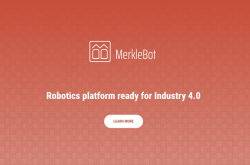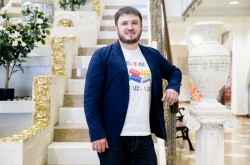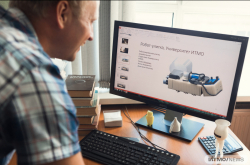The 3dprinterforkids company was created as a startup less than a year ago; they started as a manufacturer of 3D printer parts. Stanislav Pimenov, its founder, has always dreamed of his own company, so when an acquaintance of his proposed working with 3D printers, he readily agreed.
A small team of five people launched an Internet store that sold 3D printer parts, and also provided 3D printing services. Soon, they've found a partner - a company that sold plastic for 3D printing, and started to sell their services via their website, which seemed more efficient. It was around that time that Stanislav Pimenov developed his first 3D printer for children, called Sprite.
"Why a 3D printer for children? Well, when we made 3D printers, we printed parts in different colors. Once, we made a device in five colors, which looked fun, just something children would've liked. Also, it was really compact and silent. One could put it on a window sill, and it wouldn't make much noise when working. This is a great competitive advantage, as semi-professional 3D printers are very loud, and when they are working, noise becomes a real problem," comments Stanislav Pimenov.
 Stanislav Pimenov
Stanislav Pimenov
Yet, gradually the team dispersed, so Stanislav continued to develop his idea by himself. For this sake, he started working as a lecturer for one of the city's robotics teams; he also developed training software that taught children about using 3D printers, which came as a great bonus, as the robotics team's trainers became all the more interested in his printer.
The manual explains how to position the 3D printer, how to adjust it, load plastic, as well as use special software to create 3D models. The user can choose a model, upload the one they like from the Internet or even create one of their own. The manual also includes a step-by-step instruction on printing a Minecraft character. Thus, children learn about the device and how to work with it. Stanislav Pimenov is currently working on an educational video about his 3D printer.
"3D printers are gradually becoming more and more popular, as the technologies for assembling and working with them are in open access, so anyone can make one and create their own projects. Yet, few really understand how they work. I participated in Geek Picnic with my project, and for some 12 hours, I'd been telling the visitors, including children and their parents, about 3D printing. Yet, those who were really interested in what I've been talking about were those who already knew about it before or common geeks," he adds.

This is why the startuper focused on working with robotics teams, as there are quite many - about 1,500 of them - in Russia. What's more, his company became partner to a network of the Robotrek robotics clubs.
Stanislav also notes that it would be great to create a community of people who are interested in 3D modeling: when kids only start working with a 3D printer, they follow instructions; then, they start to really create. If there is a community, children will have an opportunity to share their projects, organize contests and exchange ideas.
"A 3D printer is a great instrument that helps children develop spatial thinking and learn robotics. It can be used in other fields, as well. There's a great many applications for 3D modeling; what's more, now children have lots of opportunities for developing technical thinking," adds Stanislav Pimenov.

This spring, 3dprinterforkids company has become a resident of ITMO University's Future Technologies accelerator. During the acceleration program, its founder received valuable feedback on how to organize his business, as well as found two new members for his team – a school student and a university graduate, who both want to study at the university's FabLab and help with assembling the printers. About a week ago, Stanislav launched a printer production workshop at FabLab; what's more, he's planning to conduct lectures and workshops on 3D modeling. Another of the company's plans is to become partners with the OLYMP Laboratory, where school and university students can develop their technological projects.





